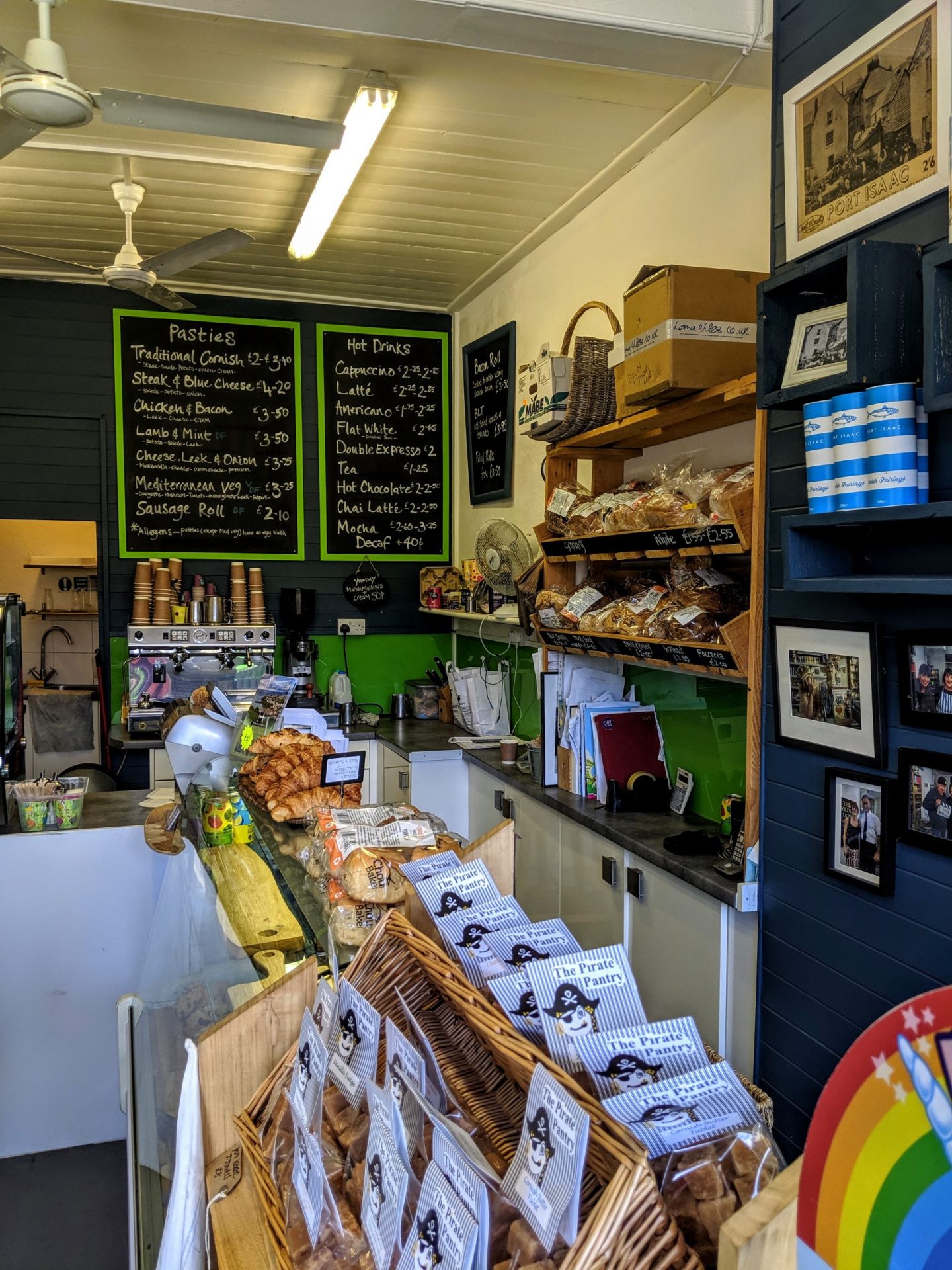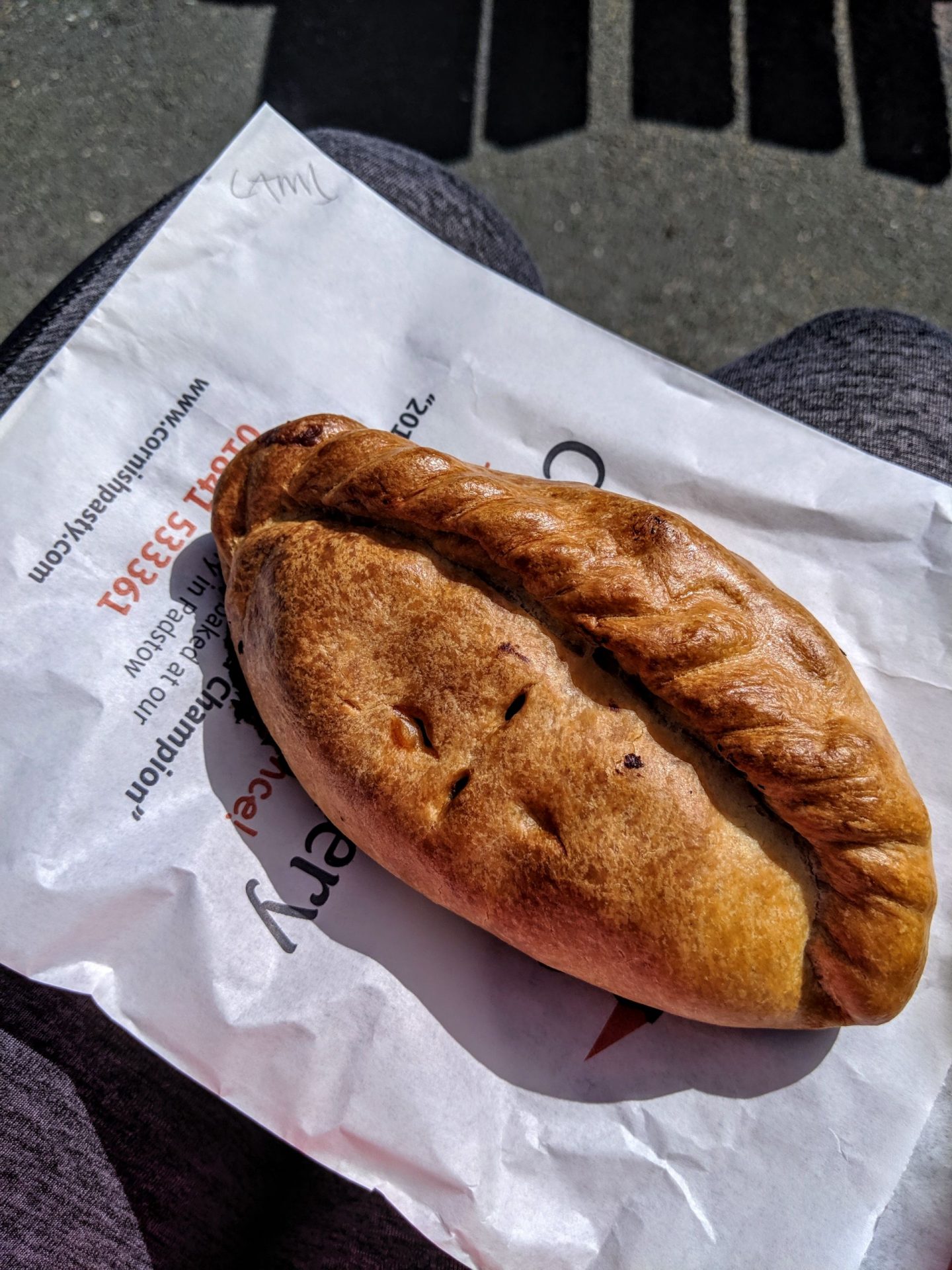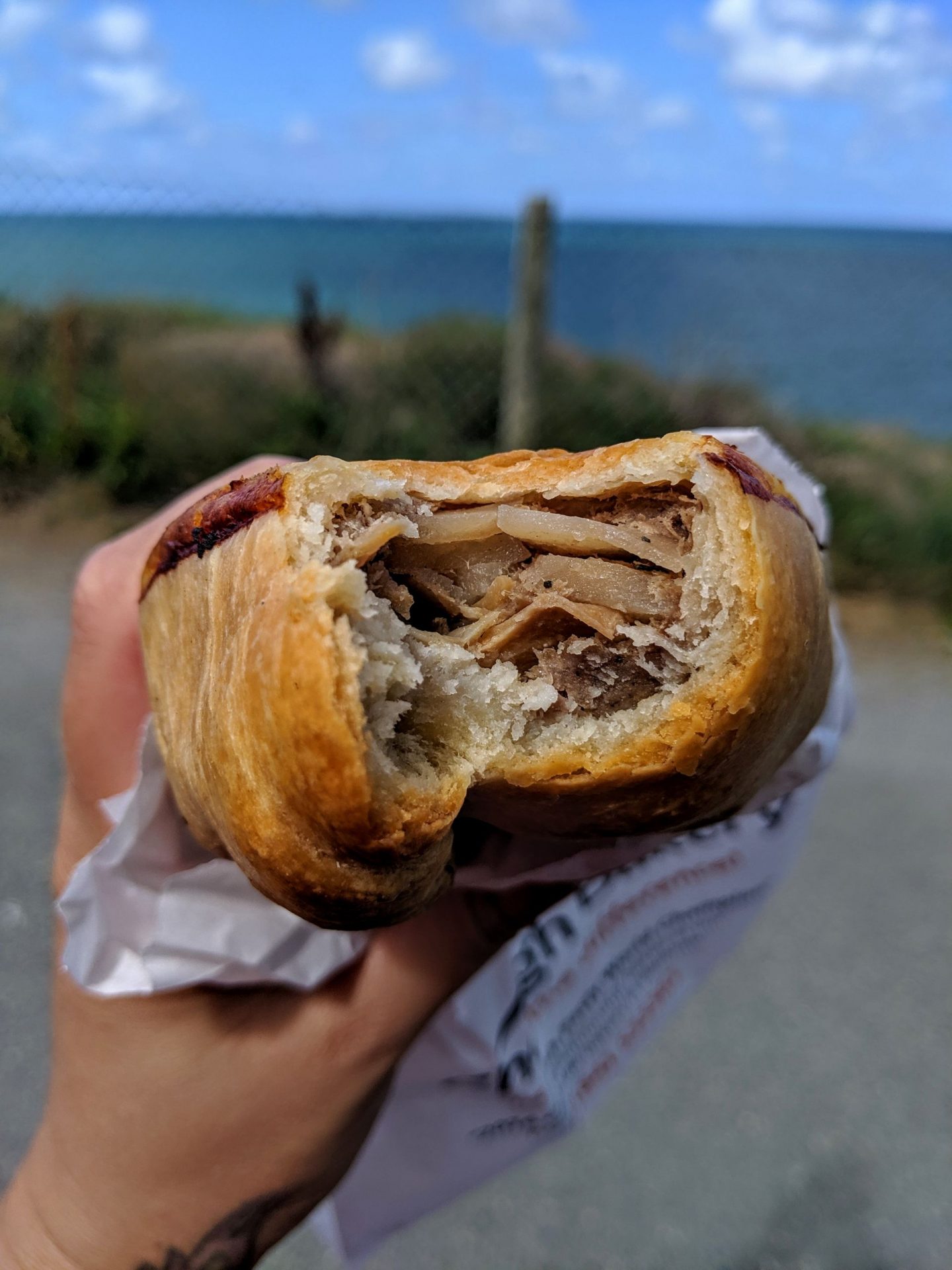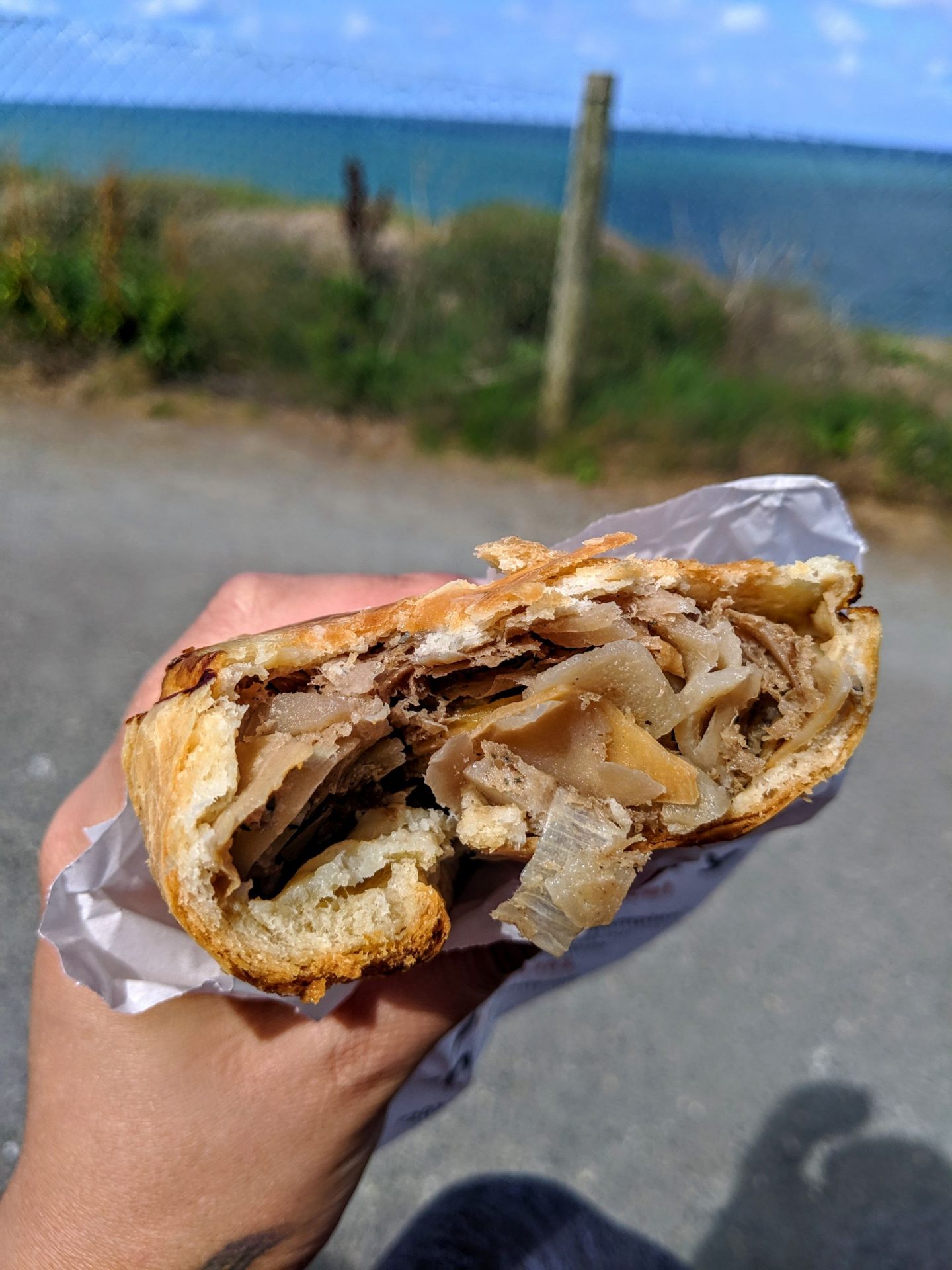“A word of caution to beginners, however: Never eat two at one sitting. You may not be able to stand when done pasties are that filling.”
Naturally I don’t go on any trip without a list of foods to try and with Cornwall the list was long, including Cornish Pasties. Now this might shock you but I’m not a fan of savoury pastry and I think gravy is the devil! (Handing over my northern title right about now!) So the thought of a Cornish pasty freaked me out a lot but in the name of blogging I decided to give one ago or maybe two just to make sure. In true chicken form I didn’t opt for the traditional ones, the thought of it maybe having gravy in freaked me out too much instead I went for a lamb and mint kind. First impressions, not as bad as I thought and by half way through I couldn’t believe how filling they were. It was literally like a meal all neatly incased in a edible house. Not sure they are something I couldn’t live without but it certainly better then I thought, in fact later in the trip I did try a traditional one which I actually preferred! I think I can cope with one a year! I would love to try one with savoury and sweet in it, if anyone knows anywhere that sells them please let me know in the comments below and I will add a trip to next year’s Cornish holiday.
Long ago, Cornish miners shouted ‘Oggie Oggie, Tiddy Oggie’ in unison at crib (meal) time, before eating their traditional pasties, also known as oggies (or tiddy oggies). Cornish pasties originated as portable lunches for tin miners, fishermen and farmers to take to work. Housewives used to make one for each member of the household and mark their initials on one end of the pasty. The miners carried their pasties to work in a tin bucket which they heated by burning a candle underneath. They threw away the oggies’ thick, wide pastry edges after eating the rest of their meal, to avoid being poisoned by tin or copper dust from their fingers.
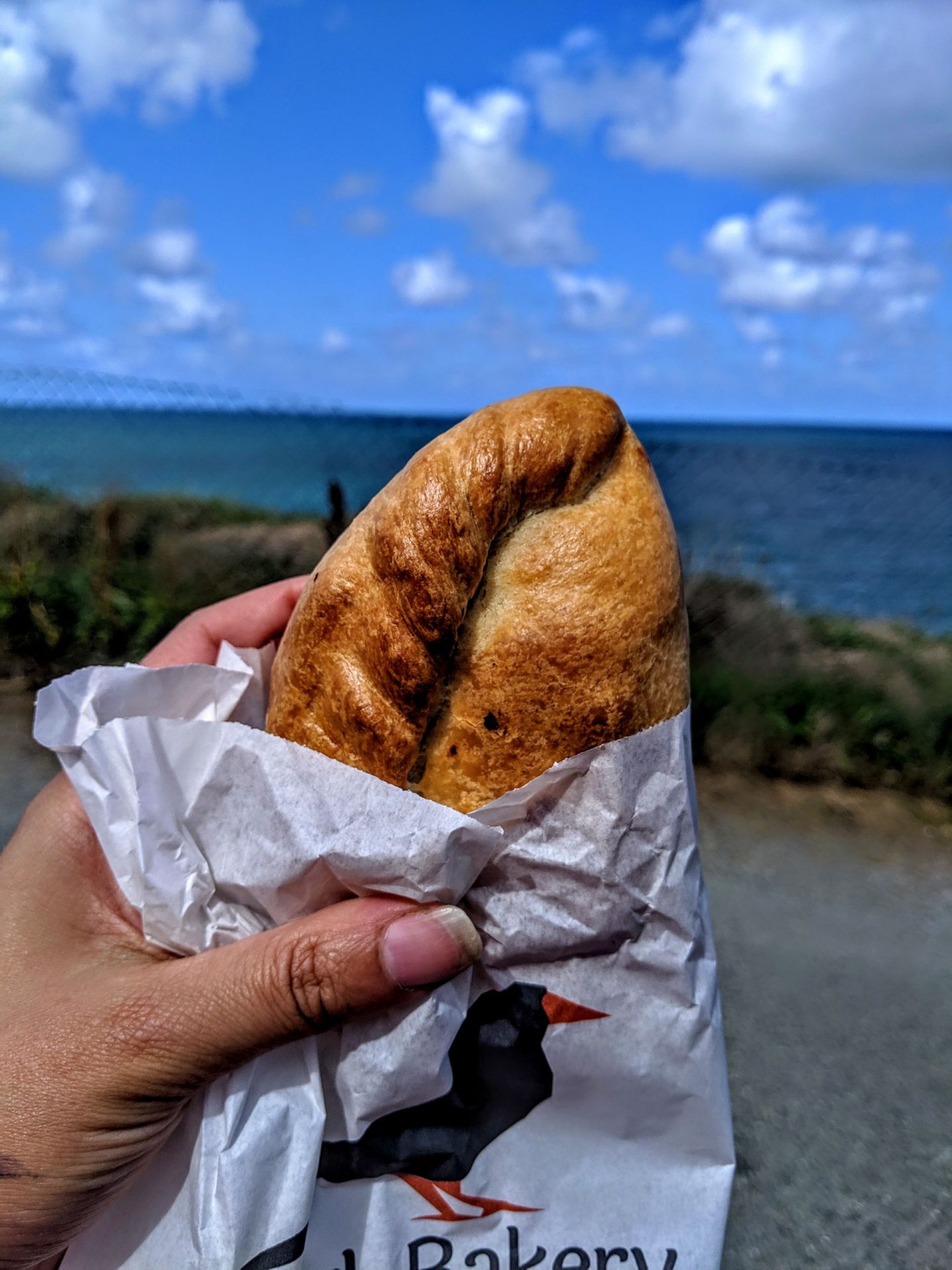
Sadly, the Cornish mining industry collapsed in the mid 1800s, forcing large numbers of miners, artisans and merchants to seek work abroad. Pasties have accompanied Cornish settlers overseas, and are to be found in many parts of the world, including Australia, New Zealand, South Africa, Canada, and the USA.
Nobody knows exactly when pasties originated, but there’s a letter in existence from a baker to Henry VIII’s third wife, Jane Seymour (1510-1537) saying ‘…hope this pasty reaches you in better condition than the last one…’
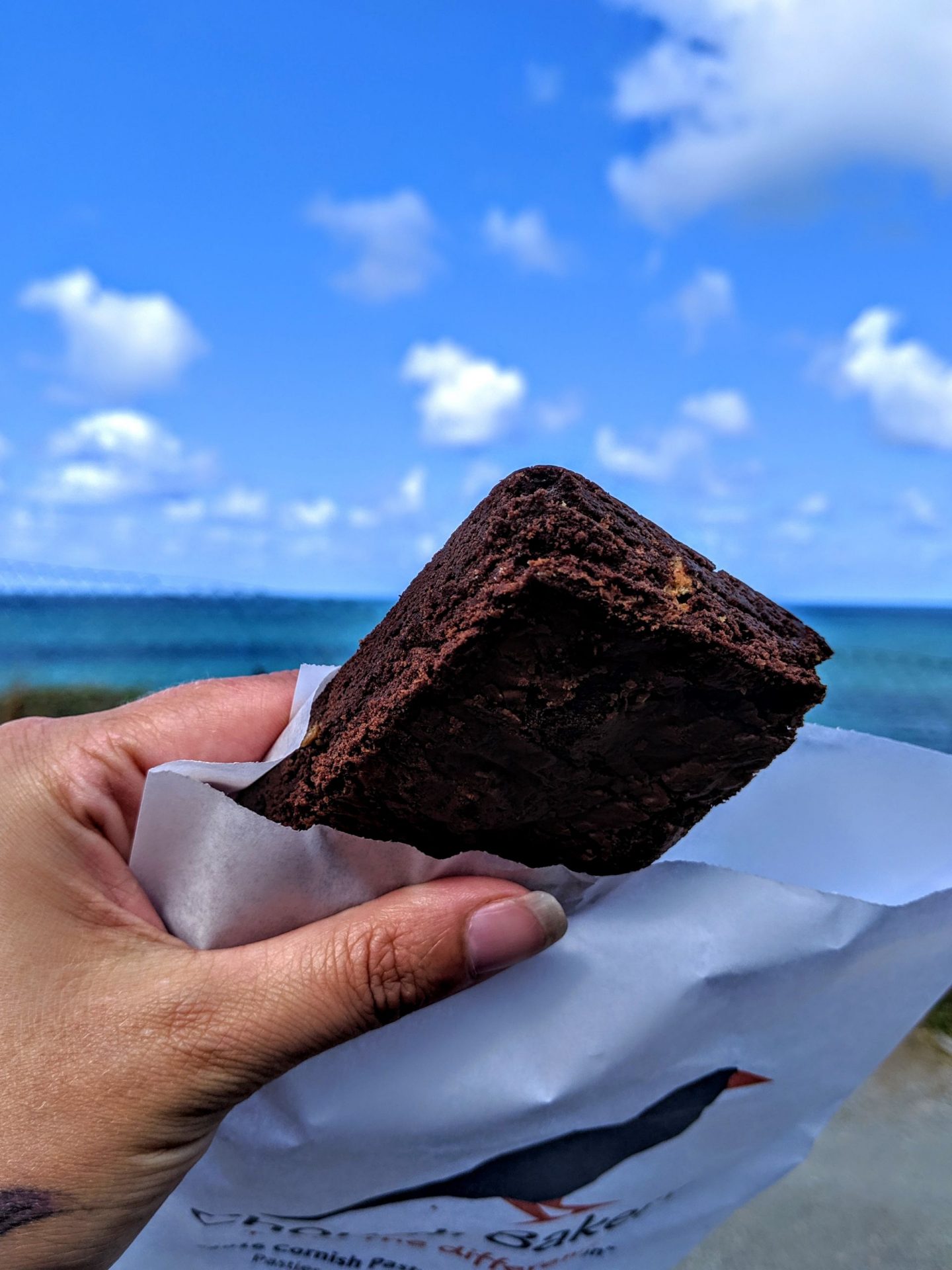
Of course I couldn’t have lunch without a little dessert and what matter pudding then a big piece of brownie! I might have also bought a couple of extra brownies for later that evening! I’m only human after all.
